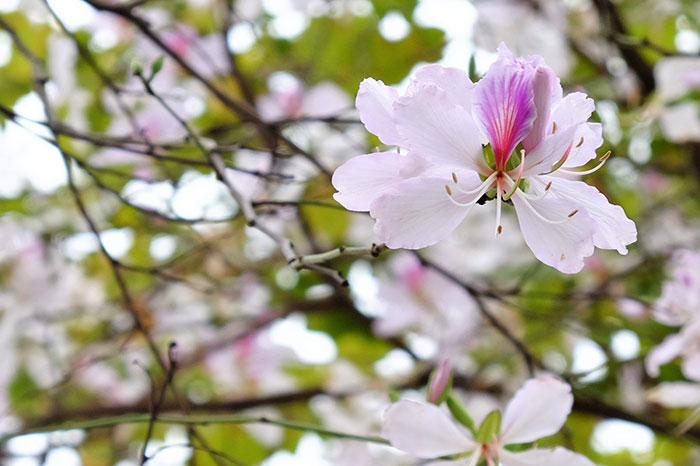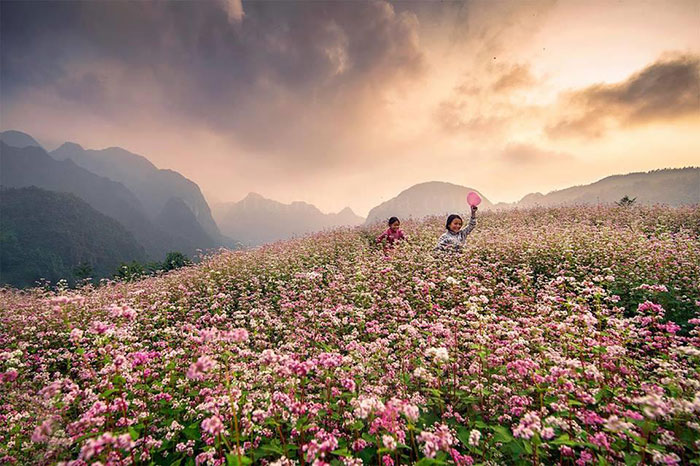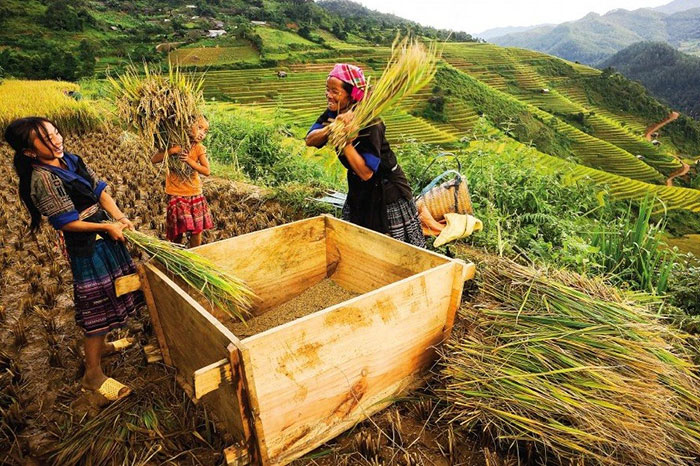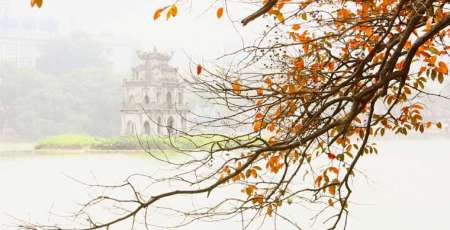
Visit Northern Vietnam to the rhythm of 4 seasons
- on May 18, 2024 By: Ngoc Nguyen
Northern Vietnam has 4 distinct seasons, each of which has its own unique character. Festivities, festivals, flowering, atmosphere, sunshine or the state of the rice fields, discover the 4 seasons that punctuate the North of Vietnam, a region that is so splendid and conceals a certain charm at each time of the year.
Winter, from December to the end of February

Northern Vietnam does experience winter, to the surprise of some travelers who think that this region is subject to the sunny climate of Southeast Asia at this time. The Tonkinese winter becomes more bitter from the end of December and even harsher in the high mountains with low temperatures and high humidity. In January, we begin to feel the excitement of preparations for Tet, the Vietnamese lunar new year. The capital Hanoi then experienced particular agitation. The Vietnamese are busy buying everything they need to celebrate the Lunar New Year with family and friends, including the Tet tree to decorate the house. Some will choose peach blossoms, others plum blossoms or a kumquat, a fruit tree with shiny dark green leaves which produces small round orange fruits with tangy flesh.

After the Tet festivities which take place between the end of January and mid-February, we recommend that you go to the Moc Chau plateau which is situated in the Northwest of Hanoi to admire the delightful spectacle of valleys of plum trees in white blossom, forests of peach trees with dark red flowers and fields of cruciferous trees with yellow flowers that stretch as far as the eye can see. In Hanoi, it is the delicious purple, white and red “ban” flowers that flood the capital and gently announce the arrival of spring. In February, the temperatures rise, and the sun becomes more present and caressing. In the valleys and the Red River delta, we are starting to transplant rice. After being left to rest for several months, the rice fields begin to take on a soft green fuzz.
Spring, from March to May

This is one of the best times to visit Northern Vietnam except for the light Tonkinese drizzle which sometimes lasts into March. In Hanoi, the delicate “sua” flowers bloom and their small white flowers announce the arrival of beautiful sunny and warm days. Throughout the Red River Delta, traditional celebrations and festivals are held in many villages. Tutelary deities or figures from the history of Vietnam are celebrated there, such as the Hung Kings Festival which pays homage to the Hung kings who founded the kingdom of Van Lang, ancestor of current Vietnam.

In April, the weather is ideal for hiking in the fabulous mountains of Northern Vietnam sculpted with rice terraces, and dizzying scenery inhabited by many ethnic minorities. April is also perfect for going to Halong Bay on land where the carpets of rice fields at the foot of the sugar loaves are starting to turn green. It’s also a perfect season to go on a cruise in the magical Halong Bay, classified as a UNESCO World Natural Heritage site. The spring sun will reveal the breathtaking landscapes of the largest marine karst in the world, bristling with nearly 2000 islands and islets.
Summer, from May to the end of August

From May onwards, temperatures start to rise and it is in June that they are often the highest, sometimes reaching 40°C. In May, the rice terraces of the mountains of Northern Vietnam are, after being plowed by buffaloes, filled with water. Flooded, they offer the splendid spectacle of vast mirrors reflecting the sun, absolutely magnificent! If May is still a good month to go walking in the magnificent provinces of Hoang Su Phi, Lao Cai, Hoa Binh or in the Pu Luong nature reserve, watch out for the heat of June and the rains of the summer monsoon in July and August.

In May, Hanoi, Haiphong and several cities in Northern Vietnam are adorned with a dazzling red of flamboyant flowers. Summer sees the arrival of many tasty fruits such as lychees or mangoes. It’s the season when we like to meet on a café terrace to drink fresh fruit juice or an iced coffee. And if the heat is too strong, then we will gladly cool off in the waters of the Gulf of Tonkin of Halong Bay and Cat Ba Island, in the magnificent lakes of Thac Ba and Ba Be or in the waterfalls of the Ngoc Son Ngo Luong nature reserve and the Suoi Mu lodge run by a charming family of the Muong ethnic group.
Autumn, from September to the end of November

Ah autumn, what a beautiful season! Very dear to the hearts of the Northern Vietnamese who find infinite poetry in it. It’s indeed a very pleasant season with mild temperatures and beautiful sunshine.

The end of September/beginning of October is one of the best times to discover Northern Vietnam and more particularly the rice valleys and the mountains where the rice terraces tumble. It’s harvest time and the rice fields all over Northern Vietnam are a dazzling yellow. The rice fields are bustling with activity for the harvest, we cut the rice, we thresh it then we dry it on the sides of the road. Go to the famous “photographers’ route” in the Tu Le sector to enjoy the spectacle and to taste Com, tender sticky rice with an inimitable flavor. In November, you should go to Dong Van Karst Plateau to witness the buckwheat flowers blooming. With their pink and purple colors, buckwheat flowers line the valleys at the feet of the stone giants and create some of the most beautiful landscape paintings in Upper Tonkin!
Related articles:
>> Top 10 tips and tricks for a successful trip to Cambodia
>> Best things to do in Vietnam
>> Tour 3 weeks in Vietnam, an exciting tour of the Dragon
>> Vietnam tour 15 days: What to do? What itinerary ideas do you have?
>> Tour 1 week in Vietnam: Good deals for a 7-day tour in Vietnam
>> Tour in Vietnam in one month: 3 options to absolutely enjoy!
>> Preparations for the traditional Tet, the Vietnamese New Year
>> Tour to the Mekong Delta: itinerary ideas in 1,2,3,4,5,6 days to know
 Español
Español Français
Français




















Morgane Ter Cock
on Dec 18, 2025HerbertPhomaMS
on Oct 19, 2025Lilyan Cuttler
on Oct 15, 2025Avenue17XC
on Sep 14, 2025Avenue18JL
on Jul 21, 2025